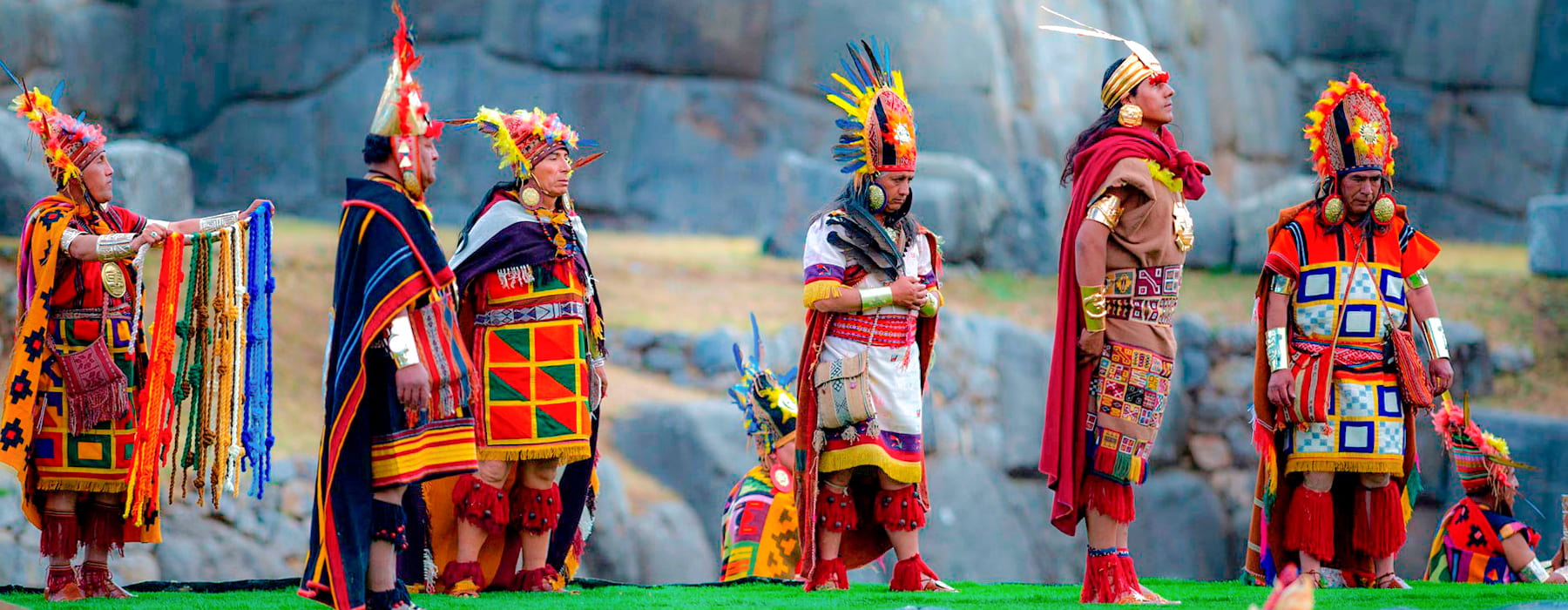
The Important Festivals in Cusco, There are unique dates that make the trip to the Capital of the Incas a magical experience: Carnivals, Easter, Corpus Christi, Inti Raymi, Christmas, New Years, are just some of the most important festivals celebrated by the population of Cusco. Get to know the tradition and the joy that the city “Navel of the World” radiates during those days.
Carnivals are a festival that is generally celebrated in February (or early March) in Cusco and Peru. The central days are Sundays in which the population plays with each other by pouring water and talcum powder. Another tradition is to dance around the tree or “Yunza”, adorned with various gifts that people collect when they cut and fall. Carnivals are characterized by overflowing joy during which you can taste the delicious traditional dishes of the region.
The festival begins on the first Thursday before the central day with the day of the comadres. On that date, the women celebrate their compadrazgo relationship (a religious union with friends) with funny rag dolls that allude to them. The following Thursday, the day of the compadres, the men do the same with the women. These celebrations mark the prelude to carnivals.
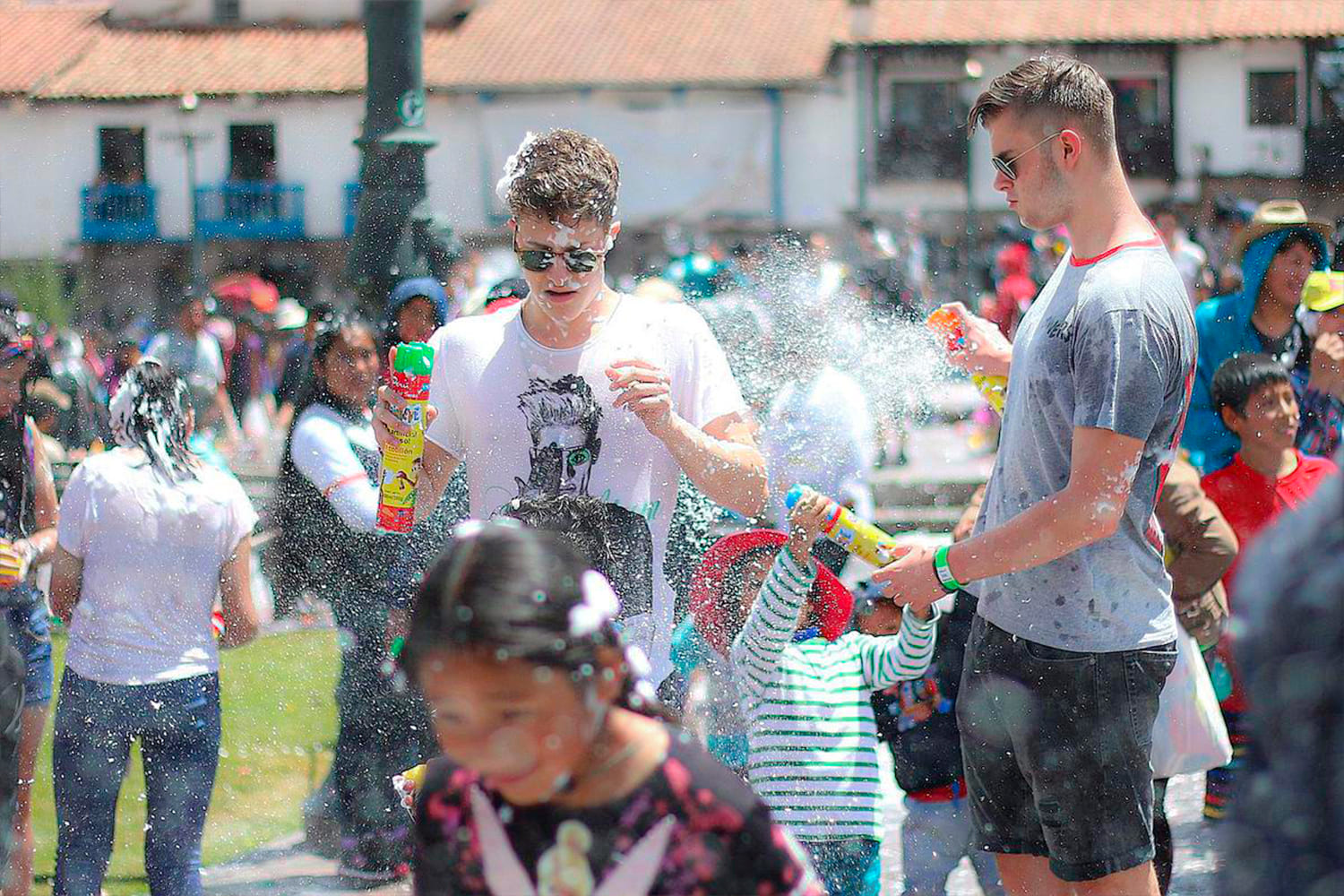
One of the most fervent and oldest religious festivals (more than 2 centuries) in the Cusco region is celebrated in the city of Ocongate (Quispicanchis Province) with fines in May or early June. The pilgrimage of the Lord of Qoyllur Rit’i (Bright Snow) is a religious rite that brings together miles of residents and visitors who log several kilometers on foot to the Sanctuary of Sinakara at 4600 meters above sea level and at the food of the snowy Ausangate. During the pilgrimage, the Christ of that city is worshiped with dances, music and fireworks. On average, this takes 5 hours of walking and reaches temperatures of -4º C.
This religious festival also has a very ancient Andean component in which the mountains or “Apus” (ancient Inca gods) are worshiped. It is believed that the origin of this festival took place many years near the snowy Sinakara, where an indigenous boy named Marianito Mayta befriended another boy with blond hair. After an intense search, the priest found them. One is transformed into a rock with the image of Mr. de Qoyllur Rit’i and the other (Marianito Mayta) without life. There are countless traditions surrounding this religious figure.

The most important religious festival in the city of Cusco is celebrated in June or the end of May, but always on Thursdays. Corpus Christi consists of the procession of the fifteen main saints and virgins of the city. It is part of the most important festivals in Cusco. This celebration had its origin in the Incan, when the natives walked the mummified remains of the dead Inca rulers. Upon the arrival of the Spanish, replace the deceased Inca leaders with the most representative images of Catholicism.
The Corpus Christi festival begins one day before the central Thursday, where the fifteen images, always accompanied by parishioners with music bands, make their entrance to the Cathedral of Cusco. On the central day, they record the city of Cusco in procession. The party ends with the celebration where there is no shortage of food, drinks and music. After seven days, each image returns to its original church. During this festival, the traditional dishes of the region abound, especially the one called “Chiri Uchu”.

The festival of the sun (Inti Raymi) is one of the important festivals in Cusco that worships the sun, the Inca god, every June 24 during the beginning of the winter solstice. This celebration is characterized by claiming the ancient Inca tradition that represents their ancestral rites in their sacred places, such as Sacsayhuaman, Qoricancha and the parade ground of Cusco. In addition to this ancestral representation, the population also celebrates with music, dances and typical food. The sun was one of the greatest Inca deities.
Currently, Inti Raymi takes its main stage in the fortress of Sacsayhuaman. There, the representation of the Inca is carried in steps to the main altar where it will worship the sun. It is accompanied by representations of priests, beautiful ñustas, the Inca nobility, their royal entourage and the natives of the time. Other places where the Incas worshiped the sun are the parade ground of Cusco and the Qoricancha (Temple of the Sun). This traditional festival is already more than 70 years old. It is already part of the culture of Cusco.

The global Christmas celebration takes on a traditional nuance in Cusco. On December 24, the child Manuelito (Andean representation of the child Jesus) is honored with the Santurantikuy festival, the largest artisan fair in the region. In addition, the streets of the city are tinged with the Christmas atmosphere. On the central day, December 25, families gather around the table, tasting the typical cuisine of the region.
The child Manuelito is the Andean representation of the child Jesus created in colonial times with the aim of evangelizing the Indians. The story goes that in 1975, the artisan Antonio Olave created the image of this shield who suffered a thorn wound in the food, due to a story he heard about it. This child, who according to the people acquires various attributes, is the main figure of Santurantikuy (sale of saints), where in addition to the handicrafts offered, he includes births or representations of the nativity.
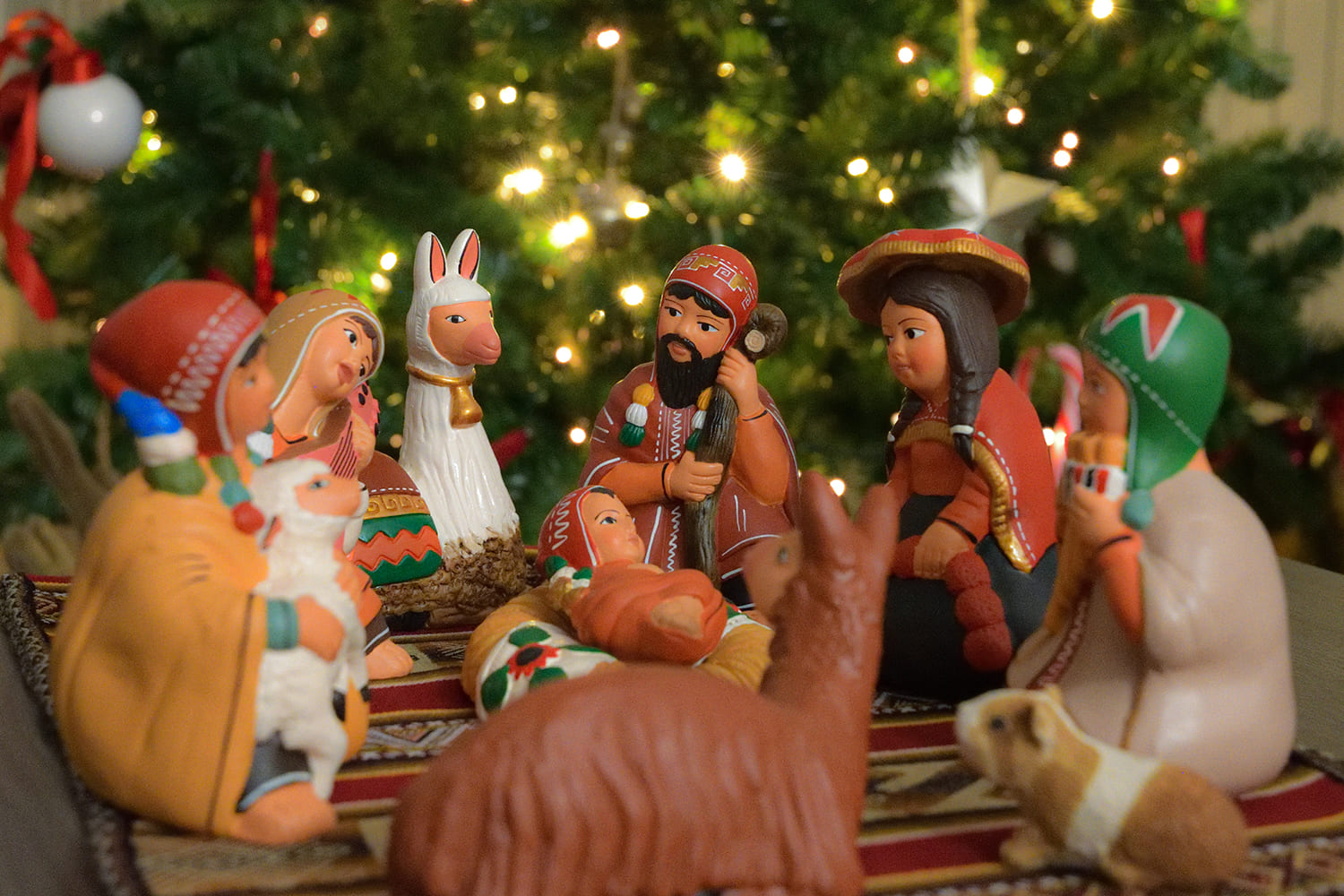
The New Year in Cusco and Machu Picchu is one of the important festivals of Cusco that is lived with great joy. The party hours before the turn of the year, is similar to the celebration that takes place in the rest of the world. In Cusco, gastronomy is tasted like a family with characteristic dishes where the suckling pig predominates. Among the characteristics of the region of the cameras, the tour in an anti-clockwise direction through the Parade’s terrain stands out. Tourists and locals celebrate with fireworks and walking hand in hand in large groups in the square. At midnight, the nights of Cusco are one of the most fervent and memorable in Peru.
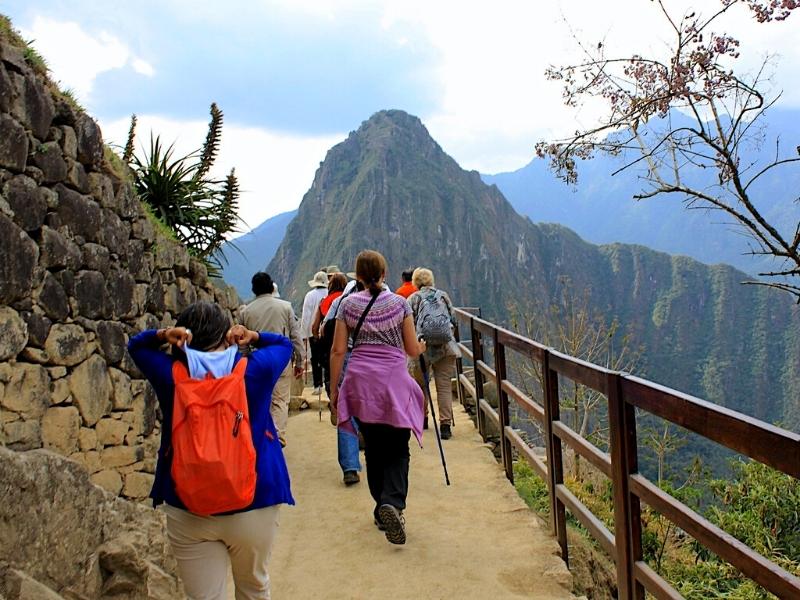
Get to know the majestic city of Cusco, cradle of the greatest civilization in South America, the Incas and their great works of engineering, the citadel of Machu Picchu by train.


Enjoy an incredible vacation, in the heart of the Inca empire, Cusco, our travel program will take you to the most famous tourist attractions of Cusco, such as the Sacred Valley of the Incas, Machu Picchu, in very cozy hotels.

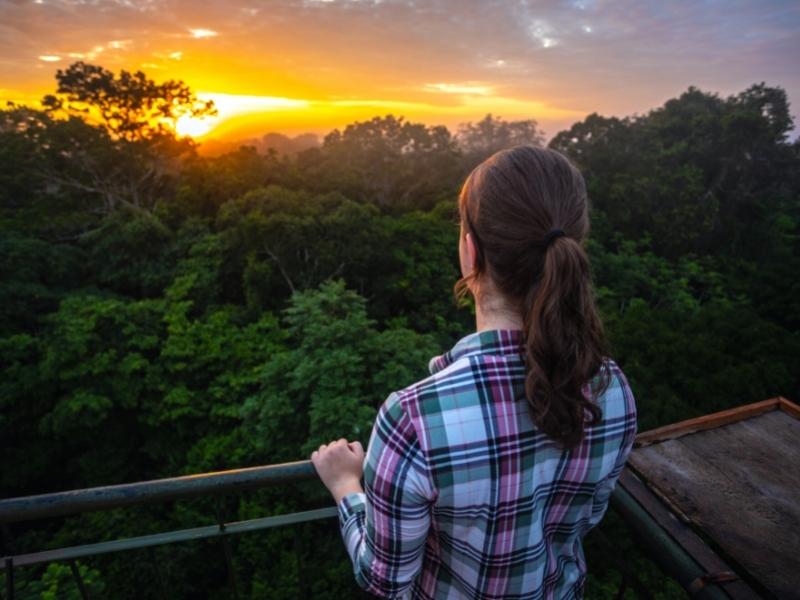
Dive deep into the culture and landscapes of Peru with this adventure to Machu Picchu, the Amazon and more. Search for wildlife along jungle trails and rivers in the rainforest from a comfortable lodge then head up into the Andes to Cusco, the capital of the Inca empire.

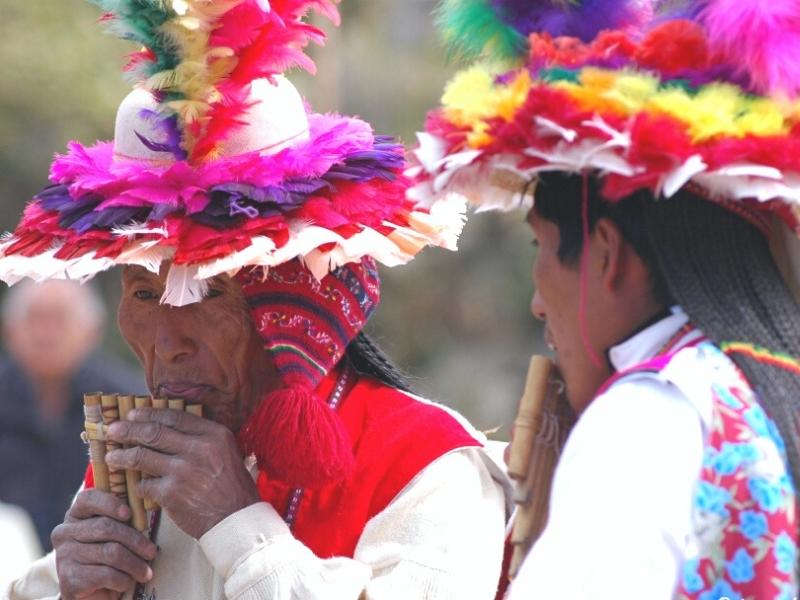
Sublime landscapes, wildlife, history, culture - Peru has more than its fair share. Its famed snow-capped Andean peaks shelter the temples and fortresses of the Inca and other pre-Columbian cultures, linked by a network of paved trails.


Cusco, the former capital of the Inca Empire, is one of the most fascinating cities in South America. Just walking through the city center you can see the incredible mix of Inca and colonial architecture, watch the merging of indigenous and Spanish influences, and feel the history that flows through every cobblestone street.

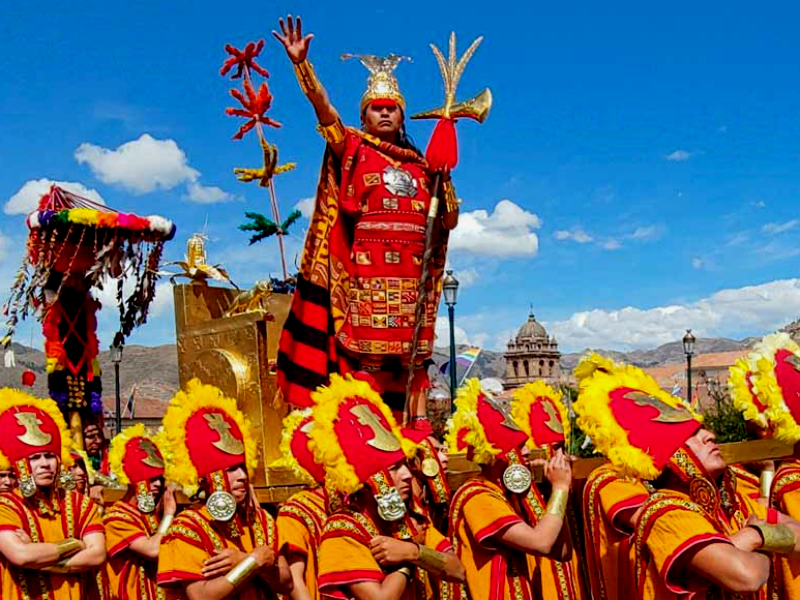
The Inti Raymi in Peru is a traditional religious festival of the most powerful god of the Inca civilization "Inti" (Sun). Each year on June 24th, The Inti Raymi festival is celebrated during the winter solstice. The festival is the most luxurious, large and colourful celebration performed in Cusco, like it was carried out on incas time.
